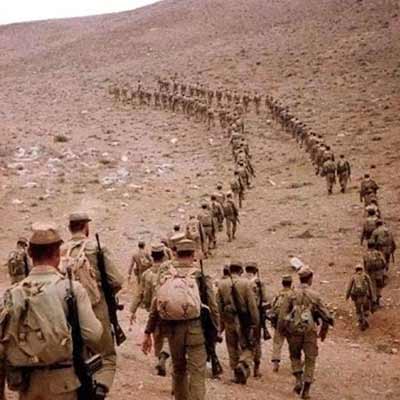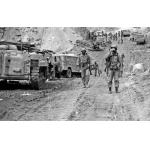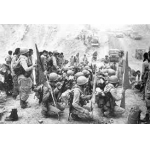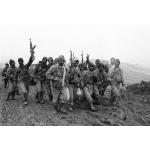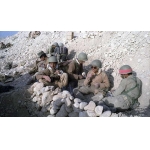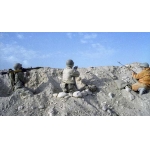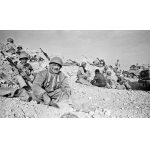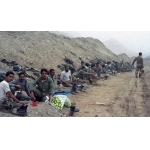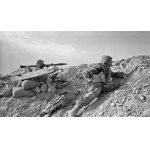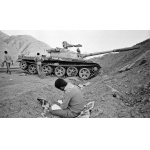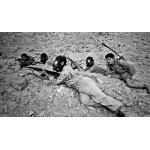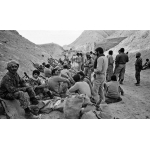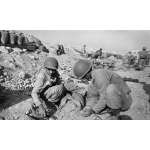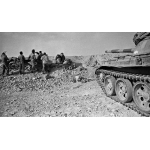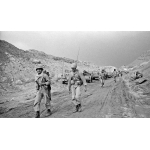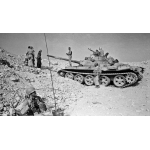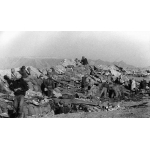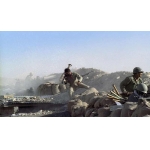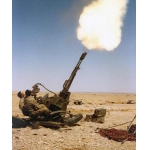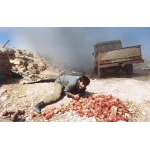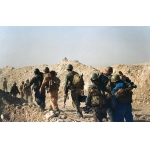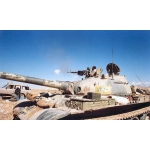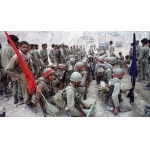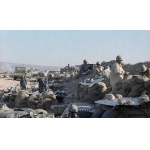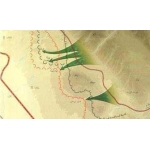Operation Ashura
Zainab Ahmadi
279 بازدید
Operation Ashura was conducted with the objective to liberate the northern heights and western slopes of Mimak in Ilam Province. It was designed and commanded by the Islamic Revolutionary Guard Corps, with the participation of the Islamic Republic of Iran Army. It occurred between October 20 and 26, 1984.
Mimak Heights was occupied by the Iraqi army before the start of their imposed war against Iran on September 11, 1980. On December 9, 1980 a section of the Mimak Heights was liberated in Operation Zulfiqar. However, other areas of the Mimak Heights, such as Fasil and Gerkani, remained under the occupation of Iraq. So, in order to liberate these areas, Operation Ashura was designed and implemented.[1]
The Mimak region is covered with scattered grooves and heights, with the distance between Bina Strait and Bijar Strait containing high peaks, the highest of which is Mount Mimak.[2]
The area of this operation was the Ilam-Salehabad axis. This region extends from the north to Somar (location of Operation Muslim ibn Aqeel on September 21, 1982), south to the Heights of Shino, Shurshirin, and Kanishekht in Mehran (location of Operation Fajr 3 on July 23, 1983), east to the Ilam-Salehabad Road and west to the crescent plain.[3]
The locations of the Iraqi positions were identified within a short period. The operation was then designed from three axes: 1. Gerkani and Bani Talhab Heights, 2. Fasil Heights and Mimak Ridge, and 3. Mimak Depression. The movement of Iranian forces began on the morning of October 14, 1984. On the way, Iraqi forces did not notice the movement of the Iranian forces due to a strong storm that started at 07:00 and continued until the afternoon. The operation started with the codename of Aba Abdullah al-Hussein at 12:00.[4]
Operation Ashura was carried out under the command of Abbas Taghig and with a force consisting of 17 IRGC battalions and 9 army battalions which were organized under the command of the Salman Tactical Base and operated under the supervision of the Najaf Base.[5]
The combat organization of the operating forces included Fajr 1: Independent Brigade of Imam Reza and Brigade 1 of the 81st Army of the West, Fajr 2: Brigade of Imam Sadiq from the Nasr Army, along with a battalion of the Tharullah Army, Fajr 3: Brigade 3 of the 81st Army of the West, along with the Independent Brigade of Ansar al-Hussein, Fajr 4: the border brigade of Nabi Akram and one battalion from the 84th brigade of Khorramabad. Fajr 1 was released from the Bijar Strait and operated on Gerkani and Bani Talhab Heights. Fajr 2, from the release point of Binah Strait, aimed to single-track the two axes of Fasil and Mimak Heights. Fajr 3 was a reserve force. Fajr 4 operated on Mimak Depression (Caspian Reed Groove).[6]
On the first day of the operation, the most important issue for the Iranian forces was the construction of a 13-14 km long embankment, which was supposed to connect the Gerkani Heights to the Fasil Heights and make the line of the Iranian forces close to impenetrable. With the great effort of the engineering teams and considering the heavy rain that restricted the air and armor mobility of the Iraqis, the combat engineering forces were able to create a suitable and reliable embankment in the occupied axes by the evening of the first day.
Despite the great importance of the Yal Mimak and Tepe Shahada axes, which contained the entire defense line of the Iranian forces and prevented Iraqi infiltration, it remained occupied by the Iraqis because of the vast minefield that was located between Mimak and Fasil.
At 02:30, in the Caspian Reed Groove, the Iranian operating forces started the conflict, but the Nabi Akram Brigade did not succeed in destroying and clearing the intended position.[7]
In this operation, the 4th Mountain Infantry Brigade of the 2nd Division, the 2nd Independent Armored Brigade, a tank battalion, a commando company, an artillery battalion, and an anti-tank artillery were destroyed and hundreds of enemy forces were killed or wounded.[8]
In this operation, while inflicting casualties and damage on the enemy, the Iranian forces controlled more than 40 square kilometers of the occupied areas, including the Fasil Heights, Gerkani, Chalk Hill, Kase Kaf, Gerkani Outpost, the important communication border road and Anzi Outpost of Iraq. Only the Caspian Reed Groove, Halala and its adjacent areas remained under the control of the Iraqis. [9]
Other reports stated that the 4th Mountain Infantry Brigade, the 2nd Armored Brigade, an artillery battalion, a tank battalion, two commando battalions, a Special Forces battalion, the 12th Armored Brigade, and the 403rd Independent Brigade were among the destroyed enemy units and 180 soldiers were captured. Also, 14 tanks and personnel carriers, 20 vehicles, 7 cannons, 20 mortars, a large number of light weapons, and several ammunition depots were captured. Additionally, 2 helicopters, 95 tanks and personnel carriers, and several explosives were destroyed.[10]
In this operation, Hassan Aqrabparast, one of the commanders of the army's ground forces, was martyred.[11]
[1] Rashid, M., Atlas of the Iran-Iraq War, Tehran: Islamic Revolutionary Guards Corps Holy Defense Documentation and Research Center, 2nd quarter, 2009, p.60; Jafari, M., Atlas of Endless Battles, Tehran: Sore Sabz, 1999, p.98.
[2] Drodian, M., A review of the Iran-Iraq War, Volume 2: Khorramshahr to Faw, Tehran: War Studies and Research Center, 1999, pp. 96 and 97.
[3] Journal of Events and Analysis, No. 11, November 1984, p. 27; Rashid, Mohsen, Iran-Iraq War Atlas, pp. 58 and 59.
[4] Drodian, M., A review of Iran-Iraq War, Vol.2, pp.97-99.
[5] Razzaqzadeh, A., Guide Atlas 3: Ilam in War, Tehran: Center for War Studies and Research, 2001, p. 48.
[6] Ibid. p. 454; Journal of Events and Analysis, vol. 11, p. 30.
[7] Nakhai, H., Journal of the Iran-Iraq War, Book 32: Renewal of America-Iraq Relations, Tehran: IRGC Holy Defense Documents and Research Center, p.460
[8] Ibid. pp. 461 and 462.
[9] Razzaqzadeh, A., Guide Atlas 3, p. 48.
[10] Samii, A., Descriptive record of operations of eight years of holy defense, Tehran: Vali Faqih agency in the ground forces, 1997, pp. 186-187.
[11] Jafari, M., Atlas of Eternal Battles, p.98


